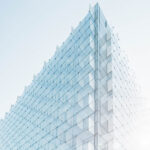In the face of escalating environmental concerns, the construction industry is undergoing a paradigm shift towards sustainability. Green construction, also known as sustainable or eco-friendly construction, is a comprehensive approach that prioritizes resource efficiency, energy conservation, and environmental responsibility throughout the entire building process. This movement is not just a trend; it is a crucial step towards ensuring a more sustainable future for generations to come.
Materials and Design: Choosing Wisely
Green construction begins with the careful selection of materials and innovative design practices. Builders are increasingly opting for eco-friendly materials such as recycled steel, reclaimed wood, and sustainable concrete alternatives. Designers are incorporating principles of passive design, harnessing natural light, and optimizing building orientation for energy efficiency. This not only minimizes the environmental impact but also leads to more energy-efficient structures.
Energy Efficiency: Powering the Future Responsibly
One of the cornerstones of green construction is the emphasis on energy efficiency. Buildings are responsible for a significant portion of energy consumption and greenhouse gas emissions. Green construction seeks to address this by integrating energy-efficient technologies such as solar panels, wind turbines, and energy-efficient HVAC systems. Additionally, smart building designs are incorporating features like advanced insulation and green roofs to reduce the reliance on artificial heating and cooling.
Waste Reduction: From Landfills to Landscapes
Traditional construction methods generate massive amounts of waste that often end up in landfills. Green construction, however, places a strong emphasis on waste reduction and recycling. Construction companies are adopting practices such as deconstruction instead of demolition, and salvaging materials for reuse. Furthermore, waste management plans are being implemented to ensure that construction sites are as environmentally friendly as possible.
Water Conservation: A Precious Resource
Water scarcity is a growing global concern, and green construction addresses this issue by integrating water-efficient technologies. Low-flow plumbing fixtures, rainwater harvesting systems, and drought-resistant landscaping are becoming standard features of eco-friendly buildings. These measures not only contribute to water conservation but also lead to long-term cost savings for both the building owner and the community.
Certifications and Standards: Navigating the Green Landscape
Various organizations provide certifications and standards to identify and recognize green buildings. LEED (Leadership in Energy and Environmental Design) is one of the most widely recognized certification programs. It evaluates buildings based on criteria such as sustainable site development, water savings, energy efficiency, and indoor environmental quality. Adhering to such standards ensures that a construction project meets the highest benchmarks of sustainability.
Conclusion:
Green construction is not just a buzzword; it is a commitment to building a sustainable future. From the choice of materials to energy-efficient technologies and waste reduction strategies, every aspect of green construction contributes to a healthier planet. As governments, businesses, and individuals increasingly recognize the importance of environmental responsibility, the adoption of green construction practices is set to become the norm rather than the exception. By building sustainably today, we lay the foundation for a better and more sustainable world for tomorrow.


















